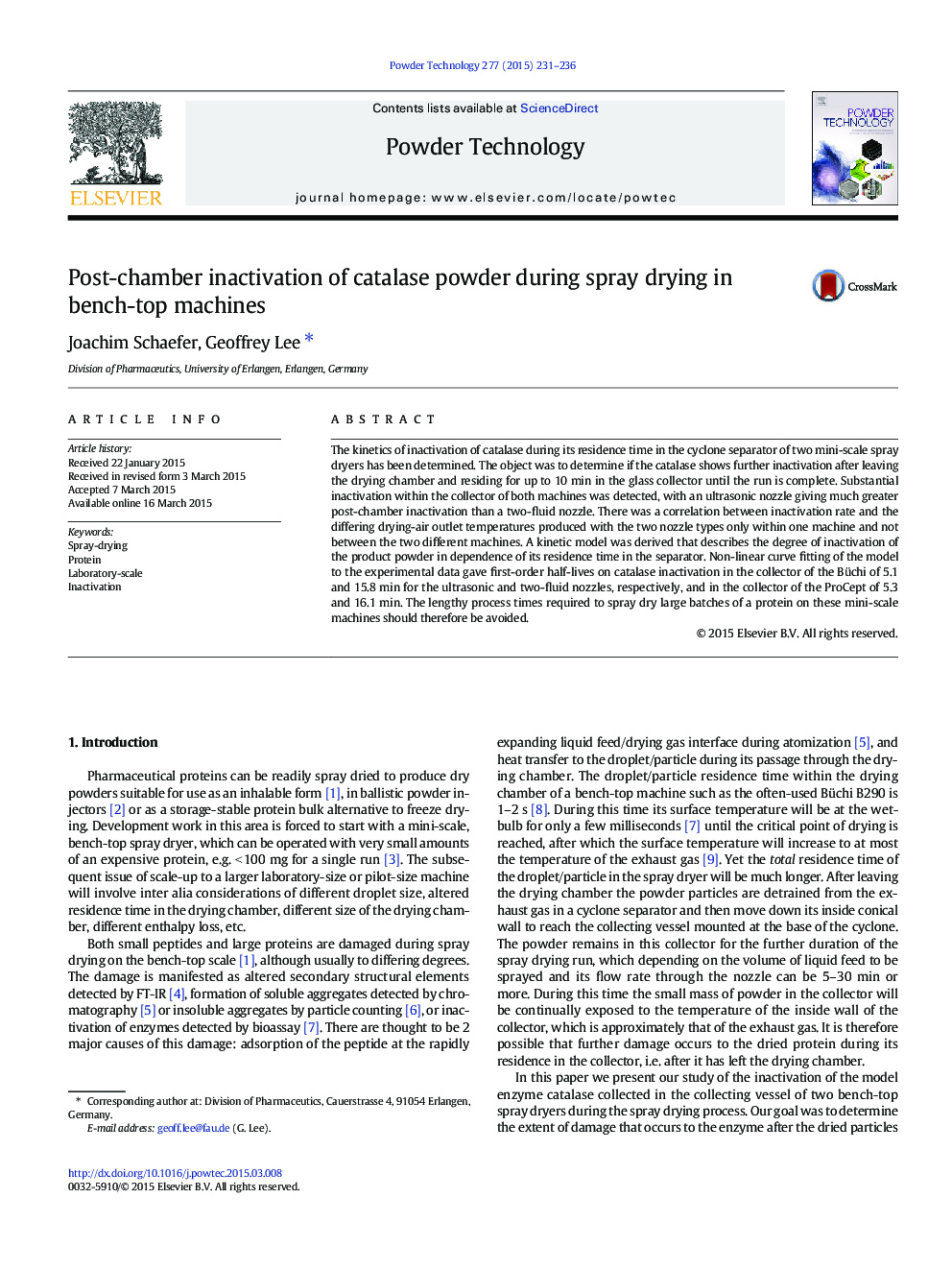| Article ID | Journal | Published Year | Pages | File Type |
|---|---|---|---|---|
| 235773 | Powder Technology | 2015 | 6 Pages |
•Demonstration of inactivation of catalase in cyclone collector during spray drying•Shows that this damage is of thermal origin•Derives a steady-state model to simulate this damage•Uses model to calculate first-order rate constant
The kinetics of inactivation of catalase during its residence time in the cyclone separator of two mini-scale spray dryers has been determined. The object was to determine if the catalase shows further inactivation after leaving the drying chamber and residing for up to 10 min in the glass collector until the run is complete. Substantial inactivation within the collector of both machines was detected, with an ultrasonic nozzle giving much greater post-chamber inactivation than a two-fluid nozzle. There was a correlation between inactivation rate and the differing drying-air outlet temperatures produced with the two nozzle types only within one machine and not between the two different machines. A kinetic model was derived that describes the degree of inactivation of the product powder in dependence of its residence time in the separator. Non-linear curve fitting of the model to the experimental data gave first-order half-lives on catalase inactivation in the collector of the Büchi of 5.1 and 15.8 min for the ultrasonic and two-fluid nozzles, respectively, and in the collector of the ProCept of 5.3 and 16.1 min. The lengthy process times required to spray dry large batches of a protein on these mini-scale machines should therefore be avoided.
Graphical abstractFigure optionsDownload full-size imageDownload as PowerPoint slide
